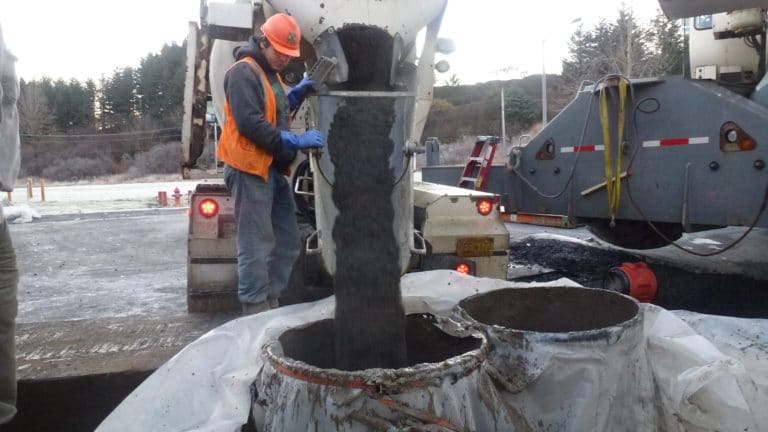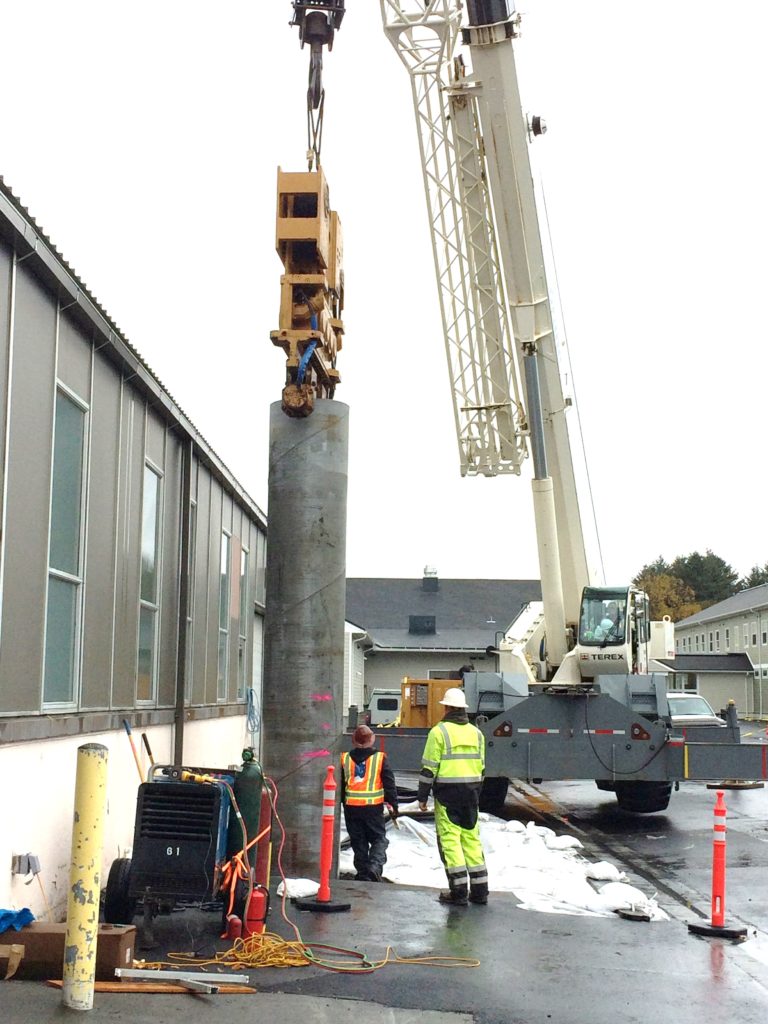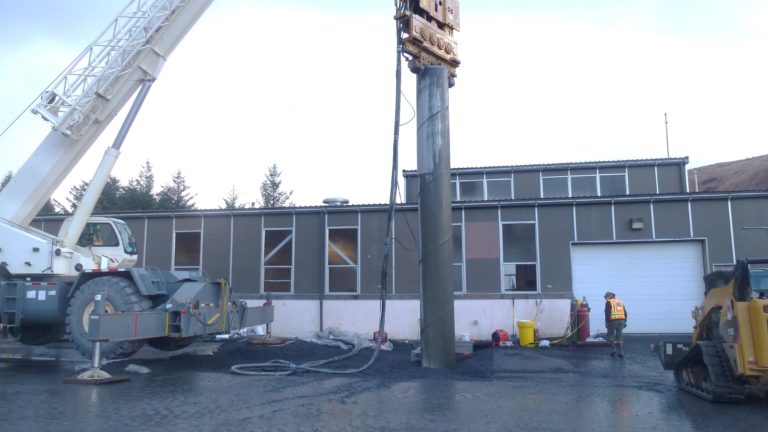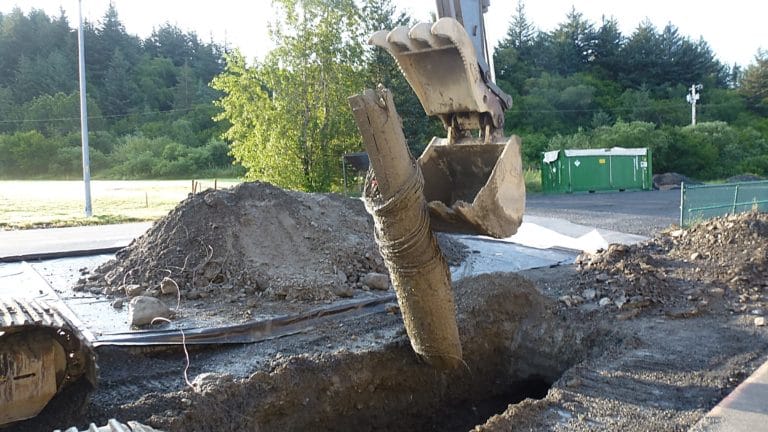By Timothy F. Gould, PE, F.SAME, and Rick Girouard, PE, M.SAME

At a remote U.S. Coast Guard installation in Alaska, a cooperative effort between industry and government successfully carried out soil and groundwater remediation at the site of a former laundry and dry-cleaning facility where several previous cleanup attempts had been unsuccessful.
At 3,588-mi.2, Kodiak is the second largest island in the United States, surpassed only by Hawaii. Located 250 miles south of Anchorage in the Gulf of Alaska, the island is home to the largest U.S. Coast Guard base in the nation. The military, along with fishing and government services, are primary components of the island’s economy. Residents and businesses rely on the area’s pristine natural beauty and the bounty it provides.
In fact, Kodiak is the largest fishing port in Alaska. Because of that economic importance, it is imperative that military stakeholders are stewards of the environment and address issues of historical chemical disposal practices and contamination.
Site challenges
Although military operations on Kodiak date back to 1898 when it was established as Fort Kodiak, the installation in its modern form was originally built as an advance naval base during World War II. The U.S. Navy continued to operate the site until 1972, when it was established as Coast Guard Base Kodiak.

Part of the site construction included a dry-cleaning and laundry facility. Years later, contaminants from solvents disposed of during its time of operation were found to be part of a plume of volatile organic compounds (VOCs) that had migrated beneath nearby occupied structures, creating a dangerous vapor intrusion issue. The contaminants of concern included perchloroethene (PCE), trichloroethene, cis-1,2-dichloroethene, and vinyl chloride.
To address potential vapor intrusion issues, an air sparging/vapor extraction remediation system was installed in 1997, but it did not address a “hot spot” on the eastern side of the building, where PCE contaminants in the soil were more than 2,400 mg/kg. Contaminant concentrations in samples collected from groundwater monitoring wells were increasing in the hot spot area as well. This led to speculation that some of the dry cleaning solvents had been dumped down drainpipes in the facility, and the chemicals now leaked into the soil.
In 2006, an in-situ chemical oxidation project commenced to address the spreading contamination. However, the chemicals meant to halt the spread of VOCs detoured into a historical wood-stave stormwater pipe and exited at a nearby beach, largely missing the contaminated zone. The chemical oxidation project was immediately halted.
Leadership determined that while the efforts enacted to that point had helped, the underlying issues remained.
A new approach
In 2015, the U.S. Coast Guard tapped into its Environmental Compliance and Restoration fund and worked with Ahtna Environmental, Inc., under an existing five-year indefinite delivery/indefinite quantity contract for environmental services, to address the contamination while preserving the nearby structure, which was under new service as the Morale, Welfare, and Recreation Boathouse.

Traditional excavation and backfill would not work in this setting. The contamination was below the water table, so digging through it would have spread the contamination. Excavating along the foundation of the former laundry facility could have compromised the structure entirely.
With review and approval from the Coast Guard Civil Engineering Unit Juneau, the Environmental Protection Agency, and the Alaska Department of Environmental Conservation’s Division of Water, Ahtna proposed a three-phase approach: collect baseline groundwater samples and borings to obtain geochemical parameters of the site; remove old utilities and replace them with modern components; and dig out the areas with the highest concentrations of VOCs and replace the soil with engineered backfill.
Contaminant removal
In the first phase, 27 soil borings were advanced north of the boathouse, and 52 soil samples were analyzed for VOCs. Contaminants were detected in 18 of the 27 borings, although concentrations were mostly below the Department of Environmental Conservation’s human health cleanup levels.
The second phase addressed the path of contaminants. The World War II-era wood stave storm drain was removed, and clay sanitary sewer piping was either removed or crushed, along with four storm drain catch basins and two sewer manholes. The stormwater drainage system east of the boathouse was reconfigured to separate utility corridors from the contaminated zone.
Because the contaminated soil was a hazardous waste and potentially harmful to human health and the environment, special precautions were required throughout. With a casing driven in and plastic protecting the surrounding surfaces, the crew used an auger nearly 3-ft in diameter to excavate the soil out and place in sludge shipping containers, which had rubber seals in order to remain watertight during transport. Soil that fell off the auger landed on plastic surrounding the drill site; that plastic was later wrapped up and sent to the soil disposal facility. Workers wore safety suits and respirators, conducted tailgate safety meetings every morning, and washed their boots when exiting the hot zone. At the end of the day, contaminated gear was stripped off and placed in a container for removal. Equipment was wrapped in plastic and parked at the edge of the hot zone at the end of a shift, and then pressure washed and cleansed with detergent when the project was completed.
In total, 713,400-lb of soil was removed from 27 boreholes and shipped for disposal. In particular, the backfill mix was critical to project success. It was engineered to both chemically reduce contaminants and decrease dissolved oxygen concentration to promote further breakdown of the contaminants by microbes.
Tracking improvement

A round of follow-up groundwater testing conducted in January 2017 and another in January 2018 showed marked improvement. An immediate and substantial decrease in the measured contaminant mass in the area was due to the physical removal of the contaminated soil. Changes to the groundwater chemistry, such as an increase in total organic carbon and total iron, showed the soil was now in an anaerobic condition. A rise in Dehalococcoides bacteria populations was also noted. Contaminant concentrations in groundwater were shown to be decreasing immediately upgradient of, within, and downgradient of the excavation area. Additionally, the soil amendments added in the backfill were demonstrated to be causing groundwater treatment in the shallow alluvium, deep alluvium, and bedrock on the site.
So while the site has improved, work remains. The soil vapor extraction system is no longer operating at peak and may need to be decommissioned, with further study needed to determine what contaminant concentrations remain. While the Coast Guard is pleased that the data has shown the remediation approach to be succeeding, monitoring will continue over many years.
